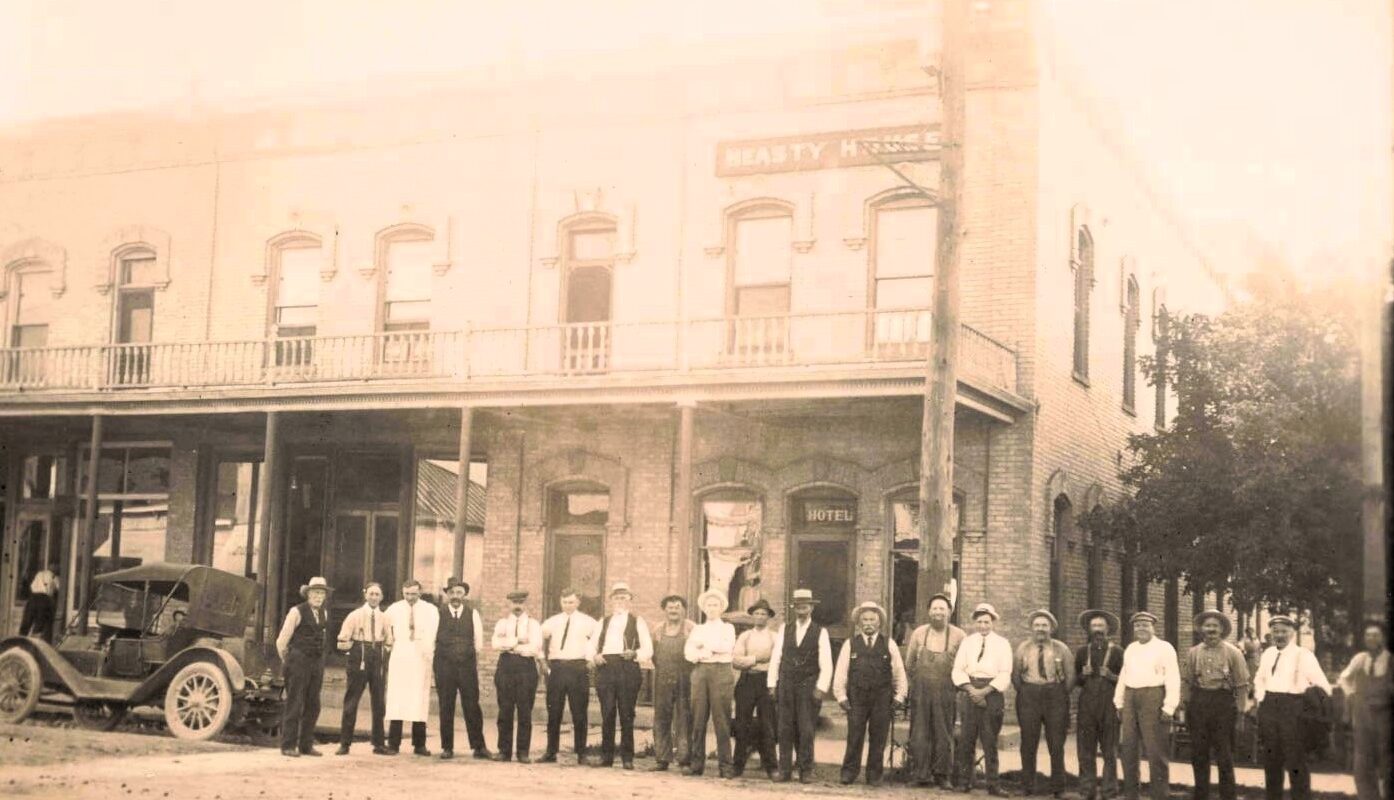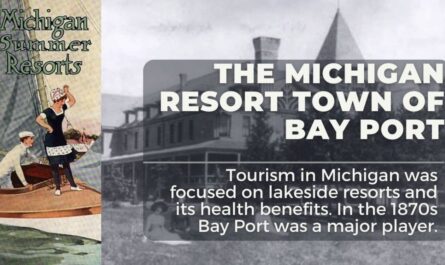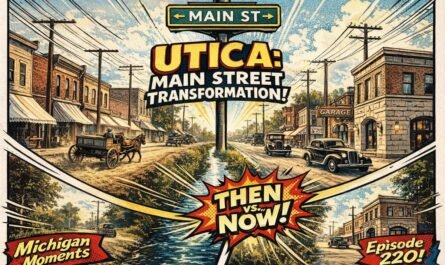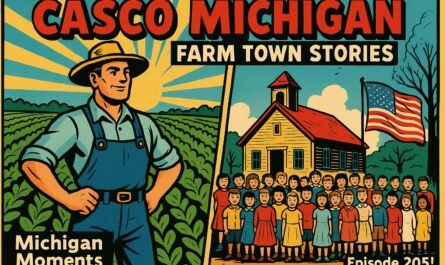In the closing years of the 19th century, Pigeon, Michigan, was on the rise. Founded along the Saginaw, Tuscola & Huron Railroad in the 1880s and incorporated in 1903, the town quickly became a hub for farmers, merchants, and travelers. In 1895, William Heasty, a Canadian immigrant and seasoned businessman, built the Hotel Heasty—an ambitious two-story brick structure designed to serve the growing needs of a bustling village.
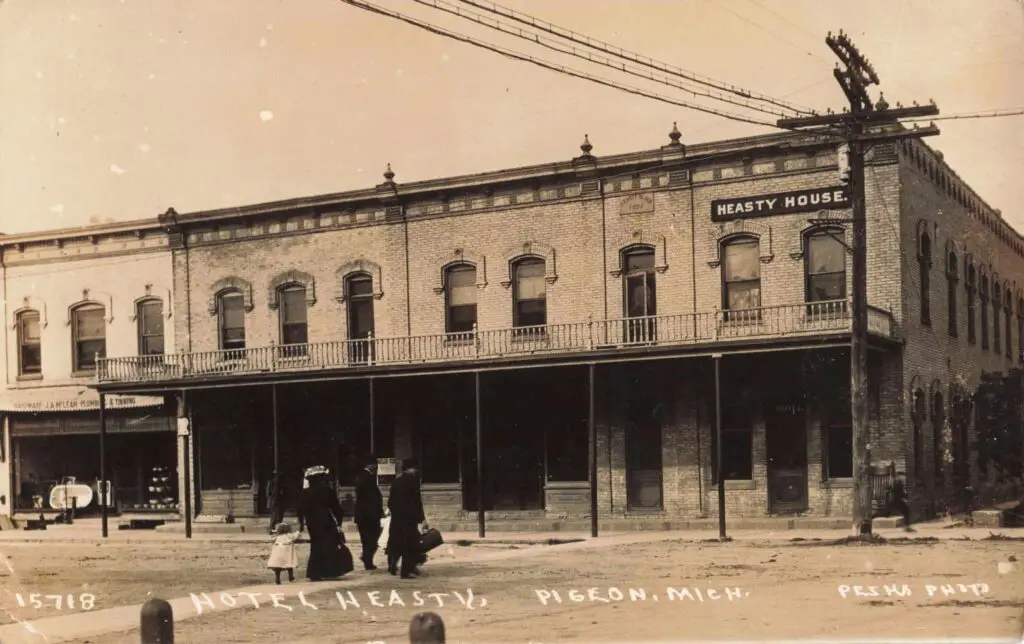
The photographs from circa 1910–1914 capture the hotel’s imposing brick façade, with its second-story balcony stretching across the front. The “Heasty House” sign is visible above tall, arched windows. Townspeople in early 20th-century dress move across a dirt street framed by telegraph poles, a quiet moment in a village where the hotel stood as a landmark. Inside, guests could expect “real home-cooked meals” and the convenience of a dining room, as advertised on period matchbooks.
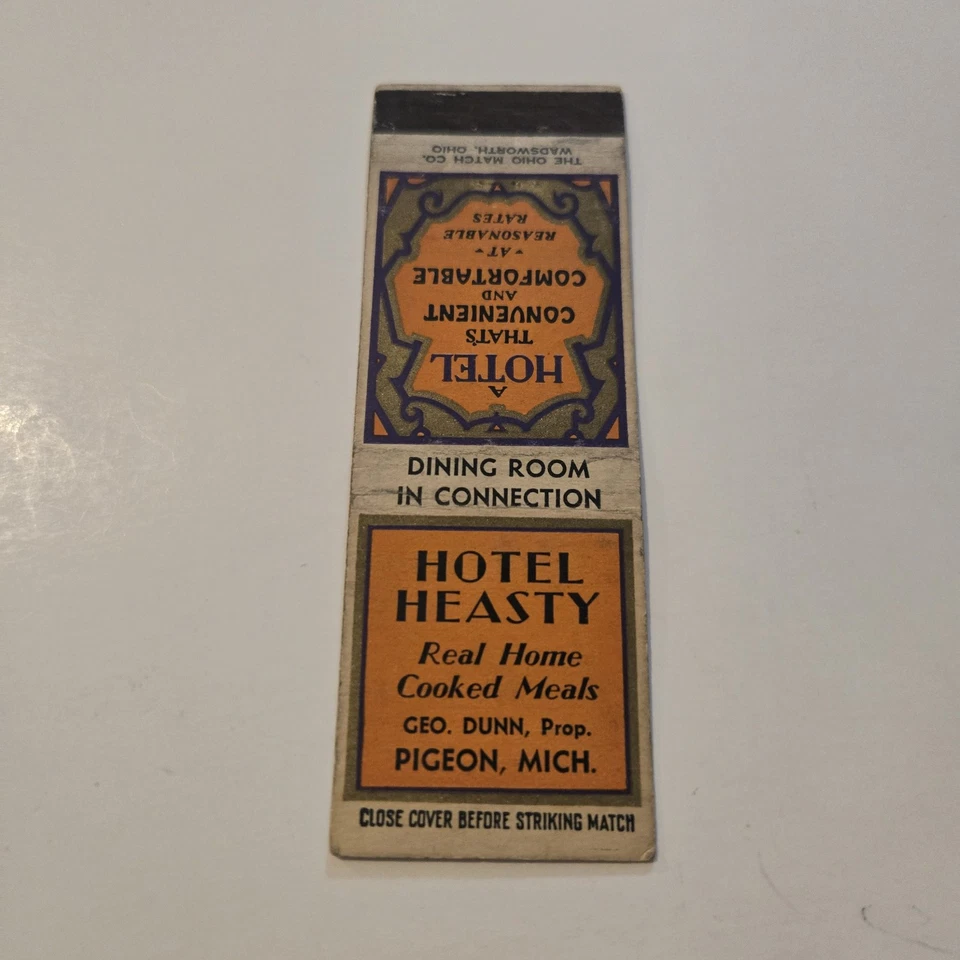
For decades, the Hotel Heasty was more than lodging—it was a social and business anchor for Pigeon. It hosted travelers, community gatherings, and visiting salesmen who arrived by train or early automobile. Its story mirrors that of many small-town Michigan hotels: built during an era of optimism, sustained by community ties, and remembered as a place where the threads of local life were woven together

